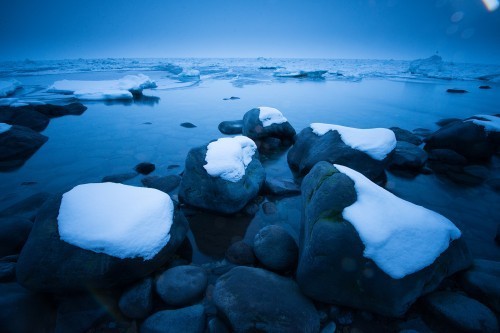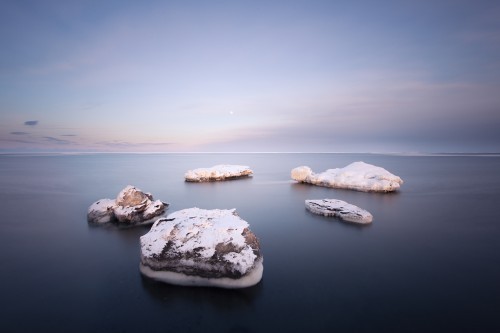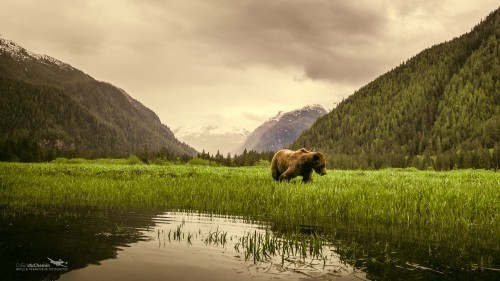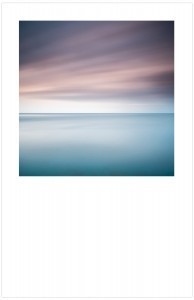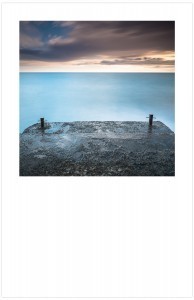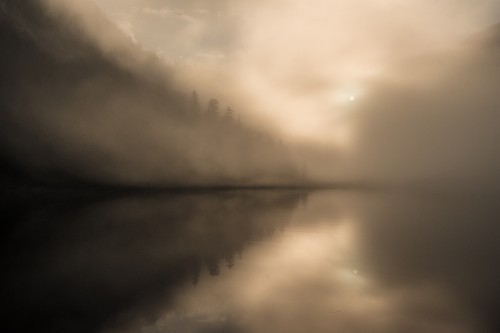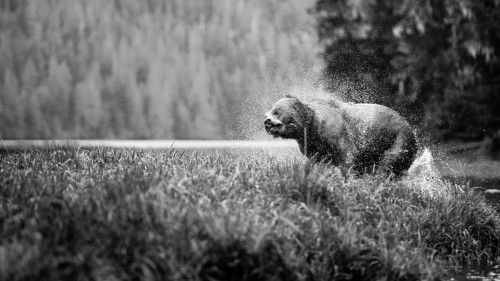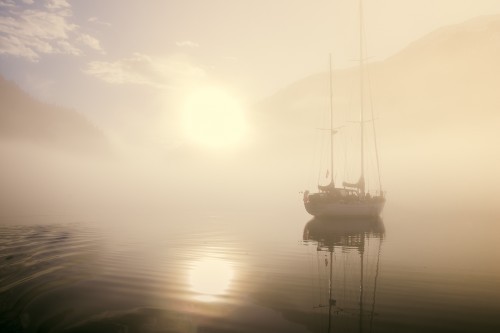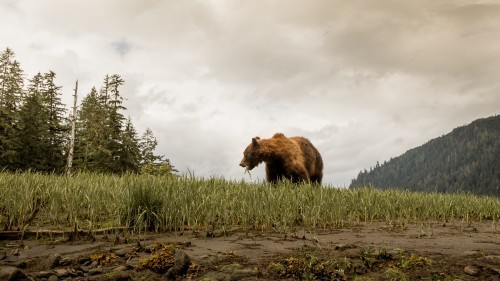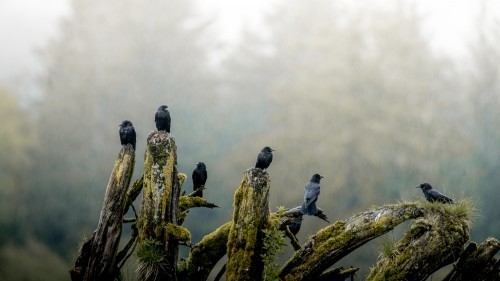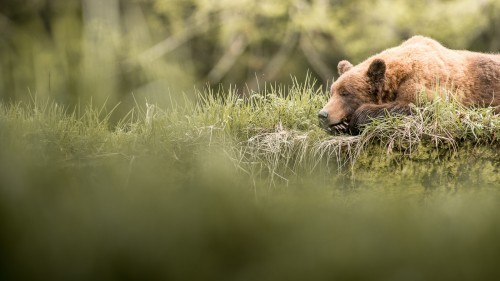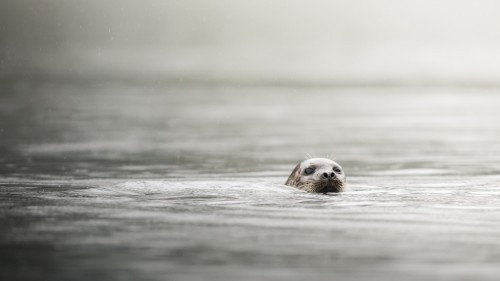David duChemin's Blog, page 35
July 8, 2013
Why Sketch?
I’m a big believer in sketch photographs, making frames you know aren’t working but have some idea in them you want to explore. The alternative is to believe that all the images I make that don’t work the way I had hoped are failures and I don’t believe in the notion of failure in creative endeavors. At least not in terms of failed efforts. Buckminster Fuller said there was no such thing as failed experiments, only experiments with unexpected outcomes. The same is true of our work behind the viewfinder. If an image or series of images doesn’t fully align with your vision or intent, there’s still that thing within it that made you raise the camera. Identify that thing, hold it back in your memory, add it to the bucket of paints you have yet to use. Your brain will do the rest. And then one day, maybe weeks later, maybe years, you’ll see the fuller expression of that thing you tried to capture previously, and the pieces will come together. But not if you’ve written it off as a failure and abandoned the thing. Here’s an example:
When I was in Hokkaido in January I was captivated by the snowy-headed rocks you see at the top of this post. A circle of elders? Something about companionship? I wasn’t sure, but I loved the repeated elements, the way they sat there on the edge of nothing, seemingly waiting together. I loved the circle they formed. But there was much about it that I didn’t love. It just didn’t work for me. But that doesn’t mean I didn’t work for it. I made several frames, played with the shapes, asked myself questions, and then filed it away, not as a failure but an idea I need to work on.
And that’s the power of the red car effect. You don’t notice how many red cars are out there until you fall in love with one. Or buy one. Or are saving to buy one. Then it’s all you can think about, all you can see. So it is with these ideas that sit incubating in our brains, these compositions that didn’t work in one scene but that are out there, somewhere. So when you do see it, you’re receptive – you’re not just looking, but perceiving. It’s why I keep an actual sketchbook of possible compositions, shapes that play together in new ways, new ways of placing elements in the frame to play with scale or balance. The more possible compositions your brain plays with, the more readily you’ll see then when they appear. The red car appears and your brain is more ready to notice it.
So when a week later I was on the edge of the sea in another part of Hokkaido I saw the same composition waiting for me to play with it, to see if this time there was something simpler, without the background chaos. And there was. My five elders waiting in a circle on the edge of the void, this time under a perfect full moon, at dusk. Sketching gets me to these places. It also re-frames my creative play in more positive ways than words like “failure” or “crap” can do.
July 2, 2013
Breakfast with Freeman
This past weekend was something like a rite of passage, of which we have so few in this culture. And those we do have seem to come accidentally; we recognize them in hindsight. Which makes it a little less a rite and a little more merely a milestone. Still, this weekend was that for me, something I’ll always look back on as significant.
When I was sixteen my mother gave me a Pentax Spotmatic and a book, Photography and The Art of Seeing, by Freeman Patterson. Both changed my life and over the last 25 years I’ve had Freeman’s voice echoing in my ears, my mind. It’s from Freeman that I get my emphasis on vision, not gear. If anyone in this art is my photographic father, it’s Freeman. We met once when I was sixteen. He was signing books and I was starry-eyed, not, I think, unlike some of the kids that ask me to sign theirs. I wonder if Freeman felt as proud, and awkward, about the whole thing (signing books, that is) as I now do. When Within The Frame came out I sent Freeman a copy, with my thanks for playing so important a role in my becoming the man, and the photographer, that I am. His reply was enthusiastic, and gracious, which no one that knows Freeman would expect other than.
I think when you’ve got something of a public life, and some books under your belt, that people see your own trajectory differently than you see your own. I’m still that 16 year old kid trying to figure this stuff out. I’m also a man of 41, working out his art with fear and trembling, and finally, after 25+ years, feeling like he’s getting somewhere. Like his ideas are sticking. Like the camera’s not getting in the way quite so much. But I’m still 16 on the inside. And my heroes are still my heroes. So when I was asked to give one of two keynote addresses at the bi-annual conference of the Canadian Association of Photographic Arts, the other of which was to be given by Freeman, my brain kind of exploded a little.
On Friday morning I lined up for breakfast with others in a cafeteria at a forestry college on the other side of the country, the first day of the conference, when I heard my name called. I turned to see Freeman, 25 years older than when I first saw him, standing there. He warmly shook my hand, we talked, he invited me to eat my breakfast with him. My brain blew up again. He did his keynote on Friday. I did mine on Saturday, humbled and a little confused when I finished to a standing ovation and there was Freeman standing with the rest of them. My heart kind of exploded that time. And my brain. Afterwards we shared some wine, told some stories, did what friends do. We both said kind words to each other, though at least one of us had a hard time hearing them. I owe him a debt, and it’s rare you get to thank and befriend your hero. But it feels like I got to connect the ends of circle this weekend, and perhaps begin a new one.
Freeman said something at the beginning of his address: “It is not important how we create, it is important that we create.” I love making photographs, and writing, but more than any of that I hope I am somehow creating what Freeman has created – a life of beautiful legacy. If you ever have a chance to hear him speak, to meet him, or to read his books, do so.
Thank you, Freeman, for sharing who you are and what you do, so faithfully over the years.
June 26, 2013
New eBook – Sharp Shooter
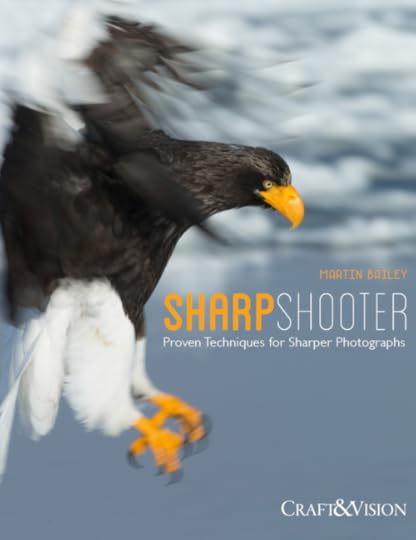
When I went to Japan this year to meet Martin Bailey for the first time I was impressed by two things beyond the fact that he’s just a ton of fun to be around. First, the man’s an excellent teacher. Second, he knows his craft. He knows stuff I’ve never heard of. And it shows. I know I lean to the artsy side of things, so I need people like Martin around to keep me on my toes and keep my craft honed. Sharpness is one of those aspects of the craft Martin taught me new things about. I’ve said before that if the best thing someone can say about my work is that it’s tack sharp, then I’ve probably failed. But at the same time, if it’s dismissed because a flaw in my technique or understanding, my art doesn’t have a chance to be heard.
Martin wrote Sharp Shooter, Proven Techniques for Sharper Photographs because I asked him to. I learned so much from him in Hokkaido about this stuff that I knew we needed to publish it, and he’s created another excellent book. Martin, in his usual clear and concise fashion, covers the gamut on this from hand-holding techniques, stabilization, what makes an image sharp in the first place, to macro-sharpness, focus stacking, techniques to make your images sharper for final output, and more. I swear to Ansel Adams, you’ll be hard pressed to find a guy who makes sharper photographs, and he can teach you to do it too.
Sharp Shooter is a 36-spread downloadable PDF eBook, and it’s available today from Craft & Vision. Read to the bottom of the page for the usual discounts and purchase codes. Here’s a glimpse inside the eBook:
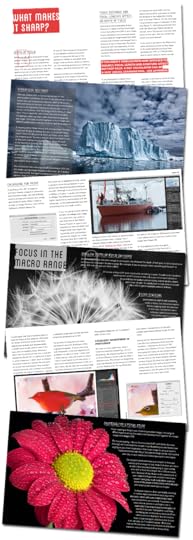
Use the promotional code SHARP4 when you check out and pay only USD $4 OR use the code SHARP20 to get 20% off when you buy 5+ Craft & Vision products. These codes expire at 11:59 PM (PST) July 4, 2013.
June 24, 2013
SEVEN is shipping!
First, here’s a desktop wallpaper for July. This is quickly becoming one of my favourite photographs, and I don’t really do favourites. Click the image to make it big, then do the “Set as Desktop Wallpaper” thing by your favourite method. Now, the morning news, with apologies for being off the air so long…
The elves have been busy, which in part accounts for things being so quiet around here. About 600 copies of SEVEN were delivered to my loft, where I signed them, numbered them, and pulled out the injured ones. Those were then shipped back to the printers to be shrink-wrapped. Then they came back to us, and while that was happening, the crew here was hand-folding cardboard protective corners, and then hand-folding custom mailing boxes, sealing them tight, adding fragile stickers, and then waving a hand of blessing over them for safe measure. Then each box was labelled with a label with individual tracking number, and sent out. And they’re still going.
Your copy should be on it’s way. Some of you have already got them, others of you will have to wait just a while longer, but it’ll be worth the wait, I promise.
What a process. I honestly had no idea it would take so much work. It’s one thing to make a book like this, and no small effort, but what it takes to sign them all, and to get them into your hands quickly and safely, is nothing short of herculean. We’re not a big crew here so this has somewhat consumed us. I’m already thinking about the next one, but judging from the look of fear on my team’s faces when I bring up the subject, that’ll be a couple years down the road.
Anyways, the books are coming, and as yours get shipped, you’ll get an email letting you know it’s on it’s way and giving you a tracking number. I’ve said it before, but I need to say it again – thank you so much for being a part of this. We’ve still got copies for sale, so if you’re thinking about gifts for others, or know someone with an empty coffee table, we’d be grateful if you’d share the love and point people to the product page on the website.
This summer I’ll be making some appearances. If you’re looking to get some education in, here’s where I’ll be…
I’ll be at the Canadian Association of Photographic Art’s conference in Fredericton this weekend, finally meeting Freeman Patterson whom I’ve long admired, and speaking about the creative process and the visual language. So excited. If you’re going to be there, please come say hello. I’m sure they’ve still got a few tickets, so if you happen to be on the east coast, I’d love to see you there and it’s going to be a great conference.
On July 11 and 12 we’re hosting a small group here in Vancouver for The Created Image Conference, and we’ve still got some limited spaces. We’re keeping it small and intimate and I’m looking forward to this one like crazy, but because we’re putting this thing on ourselves it’s a little more work than usual.
I’ve also been invited to Bali this August to speak at the What If Down Under Conference, and well, it’s Bali, so I’m going to be there. The What If Conference is new but gaining momentum, and there’s some amazing people attending. If you happen to live on that side of the world, or feel the burning need to both get some beach time and spend time with other creative entrepreneurs, it’d be cool to meet you.
June 11, 2013
Being More Creative
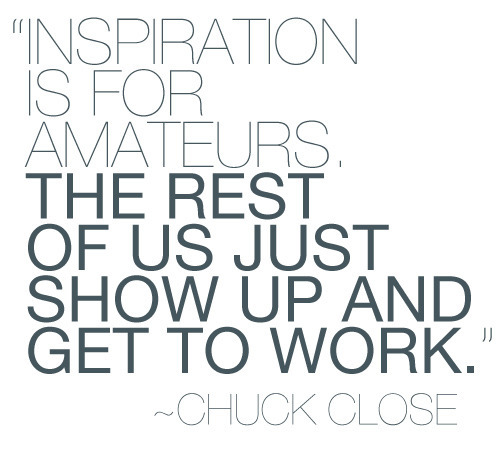
For a craft that is, at its heart, a creative effort, it amazes me that you’d have to read 100 books about making better photographs before you read anything on the creative process. And it’s not that it’s the job of these educators to teach creativity, but still. I’m sitting in a coffee shop right now, two photographers beside me. They’ve been here for an hour talking about making better photographs and the conversation hasn’t yet moved past a discussion of Tamron lenses. I’ll wait all day before they talk about the important stuff.
The truth is, I don’t want to be first a photographer. I want to be a creator. If that means I use a camera, great. If it means I use words, instead, just as good. I want to point at beauty and make experiences. Not everyone’s like that. But if creating is what you want, if you to BE more creative, here’s 5 things I’ve noticed about truly creative people. And by creative I don’t mean they’re artsy or original, just that they consistently create.
They See Possibilities.
Creative people are constantly asking What If? They work with challenges constantly and don’t focus on them, they focus on the potential outcomes. They’re positive and not easily put off by failure. They resonate with the words of Buckminster Fuller: “There is no such thing as a failed experiment, only experiments with unexpected outcomes.” They understand that creation is a process, not a product, and that mistakes are some of the best tools for learning lessons and finding new directions.
Want to be more creative? Make more mistakes and see them as part of the process, not a failure of the process. You can not create without risk.
They Ingest Everything.
Steve Jobs said creativity was really just a matter of connecting dots that haven’t been connected before. Truly creative people know that the brain will only connect dots that it is aware of. So they collect a lot of dots, from a lot of different places. They read deeply, and as widely as possible. They’re curious, knowing that the most original, and unexpected solutions to problems, will come from connections that brain makes between unexpected sources. So they collect those sources. Einstein was quoted as saying he had no special genius only passionate curiosity. Part of this is spending time with other creative people outside our usual circles. Photographers would be better artists if they spent less time with other photographers, and more time talking to painters and poets and authors.
Want to be more creative? Read up on topics other than photography, go see a play, take a life drawing class, do something that increases your inputs in an area seemingly unrelated to photography.
They Incubate.
Ideas don’t come out of the blue. They come as result of collecting a great many inputs, and letting them stew together. Inputs + Time. You have to give things a chance, and that means thinking about other things. Go play guitar. Go for a walk. Learn something new. Write a poem. Fingerpaint. Get a massage.
Corner a comedian and tell him to “say something funny,” and he’ll get really quiet and awkward. Your brain will do the same when you demand it just come up with a great idea out of the blue. Creative people know that time napping is not time wasted.
Want to be more creative? Make sure you get down-time. Hang the hammock and take a nap. Don’t rush the process.
They Ship.
You can come up with a million great ideas, but unless you make them happen, you miss the chance to put them into the real world and see them evolve and become their truest potential. Ideators are not the same as creators. The brain’s a great place for initiating an idea, but it can’t stay there. Scott Belsky, using words I’ve taken as a personal mantra, calls it living a life with a “strong bias toward action.” Creative people hear as many, if not more, voices telling them their ideas won’t work. They see as many, if not more, distractions as others do. They know if they don’t act, and make it happen, it never will. They don’t fool themselves into thinking their work is done once “they’ve had a great idea.” Having ideas is not the work of creative people, it’s just the to-do list.
Want to be more creative? Take action on ideas immediately. You don’t have to pull it all off today, but take the first step. Make work prints for that exhibit you’re dreaming of. Book the models or the studio for that shoot. Take your first steps the same day you decide to you want to play with this idea.
They Know Quantity Matters.
I’ve read of a couple studies now that directly link quantity with quality in the lives of creative people. Not that quantity is the point, nor that a lot of ideas is the same as good ideas, but people that consistently create have the luxury of getting the bad ideas out of the way, moving more quickly past the projects that don’t work, and into those rarer projects that do work much more often. In Art and Fear, by David Bayles and Ted Orland, there’s a great story about a teacher who told half his ceramics class to make one great piece, and the other half to make as many pieces as they could. The half of the class that created quantity was also the half of the class in which was found the best of the work. The best writers write often, usually every day. The strongest photographers have their first 10,000 frames long behind them. The path to mastery, and greater creativity, doesn’t come without volume anymore than learning a language comes without using the same words over and over again, getting mistakes out of the way, until they become natural. Quantity is not quality, but it heads in that direction.
Want to be more creative? Make more photographs. Stop talking about photography and go make photographs. Creation lies in the doing, not the talking.
Want more? Try these:
Brain Pickings – A great website about creativity.
99u.com – Insights on making ideas happen.
Zig Zag, The Surprising Path to Greater Creativity, Keith Sawyer - I’m reading this book now and it’s full of great insights and practical exercises.
How To Think Like Leonardo DaVinci, Michael J. Gelb. My thanks to my friend Jeff Kennedy for giving this book to me. Highly recommended.
The Inspired Eye Series – I wrote these, so I’m partial to them, but these three eBooks, available in a bundle for only $12, talk about the creative process, specific to photographers, and will give you some strong direction as you hone your own creativity.
TED Talks – Great stuff in here. Pick one a day, at random and see what you can’t learn.
June 9, 2013
Lightroom 5 – Up to Speed
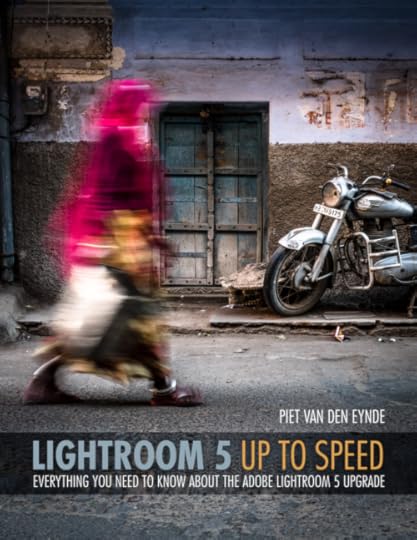
Today Adobe released Lightroom 5, and the changes are amazing. With every version Lightroom gets better and better, but every time they change things up it means time re-learning the software and adapting its new features to our workflow.
Who better to lean over your shoulder for a couple hours than a guy who’s a gifted teacher and Adobe Certified Expert, to show you all the new features and how to get started using them? Piet van Den Eynde rocks this kind of thing, and when I download Lightroom 5 I will be working through this 77-page eBook and the companion videos to get up to speed. It’s $5 and it walks you through, in Piet’s usual clear and concise way, every new feature in Lightroom 5.
Lightroom 5 Up to Speed walks you through the installation of Lr5, the new Advanced Healing Brush (finally!), Upright, Radial Filter, Smart Previews (offline editing of my images? Hallelujah!), the improvements to Book and Slideshow modules, and almost 30 other changes, big and small. He also gives you a couple pages of heads-up about plug-ins available for, and compatible with Lr5. Did I mention it’s only $5!
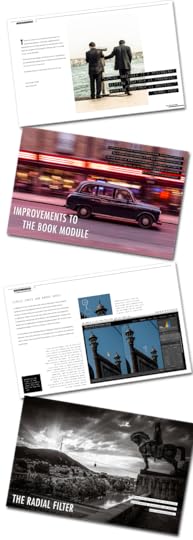
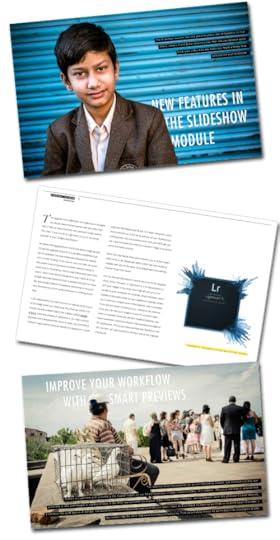
If you’re looking for a more complete shot at learning Lightroom 5, we’ve bundled Piet’s excellent book, Lightroom 4 UnMasked, which is MASSIVE, along with Lightroom 5 Up to Speed, and are offering this bundle for $20, which amounts to getting Lightroom 5 Up to Speed for free when you buy the other. We’ve locked in the savings! No discount code is needed to purchase this massive bundle for just $20 (that’s a full-time savings of $5).
And as always, buying 5 or more products from the Craft & Vision store, until June 23 (11:59 PM PST) and using code LR520 when checking out, will get you 20% off. Want even better value? Check out the bundles, which are already a great deal, and throw 5 of them in your cart.
BUY LIGHTROOM 5 UP TO SPEED ($5)
BUY THE LIGHTROOM BUNDLE ($20)
June 3, 2013
Left & Found
Left & Found I and II, Liguria, Italy 2013
I started a new project this weekend, excited by the possibilities and driven by the need to just get my work out there. So often I think we pull back from sharing our work for fear of the cost, fear of a loss of control, fear of theft, fear of rejection and God knows what else. And so it sits on hard-drives, sits on shelves. I want mine out there, and last year at one of our Vancouver Gatherings someone asked me for some ideas on sharing and I threw this one out: print your work and leave it somewhere. A random act of guerilla-style spreading of beauty. If what you really want is just to share it, why not?
And then the idea kept poking at me until I was sitting at Milano, the coffee shop in my new neighborhood in Vancouver’s Gastown, reading a book about ideas and creativity and out of nowhere it came back, this time with a name: Left & Found. So every month I’m printing between 20 and 40 prints in an on-going limited edition series. All about 8×5, they’re printed on fine art paper, hand-signed and numbered, and I’ve written a small URL on the back so people can find more information about the Left &Found project. The first ones get placed this week. In a year I’ll have put almost 400 prints out there, left on coffee shop tables, counters, in restaurants and shops – to be found, enjoyed, overlooked, torn, bent, collected, adored, misunderstood, or whatever else happens to our art when we release it into the world to take on a life we could never have foreseen.
It’s not much, but the more I do this the more sure I am that the question, “How can I make money at this?” isn’t remotely as interesting as a simpler question: how can I create work I love and share that work in new ways?
May 29, 2013
The Khutz Trip
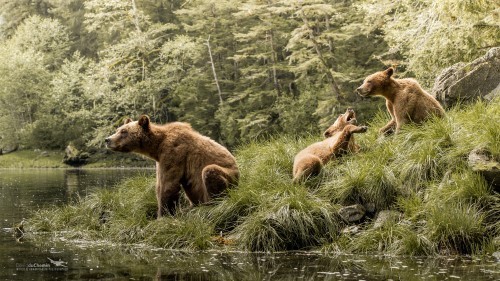 Grizzlies of the Khutzeymateen, 2013. This is a large desktop wallpaper, feel free to click it, make it larger, download it and enjoy it on your desktop. This is my favourite image of the trip and sums up my time with these beautiful bears.
Grizzlies of the Khutzeymateen, 2013. This is a large desktop wallpaper, feel free to click it, make it larger, download it and enjoy it on your desktop. This is my favourite image of the trip and sums up my time with these beautiful bears.
I’ve been planning this trip to the Khutzeymateen for a while now, not because I’ve got a particular thing for bears in particular, or that I have any desire to become a wildlife photographer, though as life goes on I’ve got less use for the labels anyways. I went because I’ve loved wilderness since I was a kid taking first walks in the Black Forest, and later, in a kayak my father made, summers in Canada’s Algonquin Park, a place I still long for in my dreams, falling asleep in the tent to the sounds of loons calling across the lake. I went because I’ve got this wild notion that when you get a wild notion you just need to say, Yes, and do it. So I signed on for two back-to-back trips with the Ocean Light II, a 72-foot ketch-rigged sailboat that takes clients to some of the wilder places on British Columbia’s coast, hoping to relax a little and explore the new direction my work began to take in Hokkaido.
Packing, I took as little as I could. I joined the Ocean Light II in the Khutzeymateen Inlet, a 20-minute flight in a Beaver float plane, away from Prince Rupert, which is either a 2-hour flight or a 20-hour drive from Vancouver, and the weight limit was a strict 60lbs. Even with my lightest technical down sleeping bag, which weighs only 2lbs, and a couple pairs each of underwear and socks, I was forced to pull out my tripod. I’ll put my packing list at the bottom of this post for those for whom that’s helpful, but here’s the broad strokes:
It rained like the gods were weeping, all day, for at least 4 of my 6 days. Best clothing choice was waterproof gear – jacket and pants – from Patagonia, knee-high boots from the Muck Boot Company, and Icebreaker layers underneath. Best gear choice was two Think Tank Photo Hydrophobia rain covers. I loathe rain covers, and I’ll do almost anything to avoid using them, but these are the best I’ve found, though the aweful truth is that I had to go to YouTube to find out how to unscrew the eyepiece ring from my Nikons in order to mount the eyepiece for the covers. And you thought the pros were meant to know that kind of thing.
Most of the photography happened from inflatable zodiacs and with the larger lens – a 300/2.8 with a 2x – I could have used a monopod. My friend Jon had one with a beautiful Really Right Stuff head on it that I might look into. But in the end it wasn’t the images from the 300/600 focal lengths that I liked best. The Khutzeymateen was an amazing place, and the encounters with the bears were extremely intimate, thanks to the presence of my guide, Tom, who’s been there over the last 25 years and knows – and respects – these bears. It’s easy to get a frame filled with a bear using these long lenses, but I’ve never been interested in the “look how big this lens makes this duck look” kind of photography. I wanted to make photographs that expressed some of the intimacy of the place and for that the longer lenses just don’t work for me, so in the end most of my best work was done with either the 16-35/4.0 or the 70-200/2.8. You can choose your lens based on how close it gets you, though I’ve often joked that you might not want to use a wide angle for making photographs of bears, or you can choose your lens based on behaviour and aesthetics – nothing works for me like a wide angle lens pushed in close. Which brings me to the question, “So how close were you?!” which isn’t really the point, but begs to be answered photographically.
We were close. Sometimes so close I felt I could reach out and touch them (not really, but it seemed that way). But we were safe, and I think the greatest take-away on this adventure was what I learned from Tom, with whom I had long conversations, who taught me how to approach these amazing animals. Turns out it’s not much different than you do with people. You go slow. You go with care and respect. You give them the chance, through body language in this case, to say no, and you back off when they do. You wait for them to invite you into their space. And you take your leave before you outstay your welcome. Grizzlies are large, powerful animals, they aren’t like big, cuddly, dogs, and they move with astonishing speed, but they give signs when they’ve had enough or don’t want you there. Respect that and have a guide with his hand on the throttle, and the possibility of truly intimate encounters is there. Look at the image at the top of this post, the mother let us be with her and her two cubs for two days, never showing anything more than curiosity, and eventual boredom, with us. She played with her cubs, nursed them, and watched over them, or just lay down to sleep. She trusted us. And that allowed us to photograph slowly, intentionally, and with shorter lenses. I will always believe that respect, curiosity, and a willingness to slow down, are among the most important skills for photographers. You also have to put in the time, which is why I booked 2 back-to-back trips because 3 days didn’t seem long enough for me to explore the place and get comfortable with the bears. I’d love to go back every year and make this an on-going body of work. I live in one of the most beautiful places I’ve ever seen and this year’s the first year I’ve started to photograph it.
One of the things I wanted from this work, once I began to figure out what the place was for me, was a warm, calm, consistent colour palette, and I wrestled with it for a while because the greens in this place are so visually massive, and pull the eye so much, that they were almost neon and drew my attention away from the bears. So I created a preset in Lightroom that pulled the greens back a little – less saturation, and less blue in the hue of the greens. I added some clarity to draw attention to the texture, and I pushed my colour temperature a little, though I shot on cloudy most of the time, so often I had to pull it back towards cooler. I think one of the things painters and other visual artists do well is pay greater attention to their colour palettes and that’s something I’m trying to be more intentional about. In the end I think I managed to create something with the kind of mood and magic I felt about the place, and the bears, and allowing the gesture in the frame to speak for itself.
The boat, the Ocean Light II, was an amazing home and I can’t wait to be back on it in July as we explore the Gwaii Haanas. Every night we’d come back from the estuary and eat an amazing meal while images imported, and talked about the day, shaking our head at the beauty and wonder of it, we’d dry out our clothes, check tide charts for the morning, then go to bed while batteries charged. I can’t imagine a more perfect week.
Here’s my packing list:
Icebreaker merino T-shirts – 2
Icebreaker merino Long-Sleeves – 2
Icebreaker merino Long Underwear – 2
Icebreaker merino underwear/socks – 3 each
Icebreaker merino toque and gloves
Pants – 2
Icebreaker merino sweaters, light – 2
1 Patagonia fleece, heavy
Patagonia rain jacket
Patagonia rain pants
Muck Boot Co. boots
Boat shoes/ Sneakers
Baseball hat
Towel
Sleeping Bag
twin sheet / pillowcase
water bottle
toiletries
Nikon D800 and D3s
Nikon 16-35/4.0, 70-200/2.8, 300/2.8, 2x
Batteries, chargers
sensor cleaning kit
Lens cloths – 10
Hydrophobia 300/600, Hydrophobia 70-200
CF / SD cards
11″ MacBook Air, AC cable
Card reader
iPad, cable
iPhone, cable, headphones
Moleskine notebook, pens.
Eveything packed into lightweight O.R. dry sacs and then into either my large North Face Expedition duffle bag or my GuraGear Bataflae backpack which I love more with every passing day. Another thing I found helpful was a large climbing carabiner. I keep one on my camera bag and use it almost every trip to clip my cameras to something – in this case the zodiac. Up-Strap bandolier straps are what I use all the time now, and they’re easy to tie into a quick knot to shorten them up and clip to something.
For a first look at the photographs from this trip, check them out on this post and on this post.
May 26, 2013
Nice Capture?
Some thoughts about the way we talk about photographs. As always, I think the questions are more important than the answers. I’m not looking for consensus, just giving voice to my own thoughts and questions. Yours might be different.
Thought the First.
“Nice capture,” says nothing about what you felt when you experienced a photograph. It says nothing about art. It says nothing, really, more than, “Good job.” Our hearts are in the right place, I know, but we can do better. In this language, aside from it perpetuating the language of predation (we shoot, we capture), there’s something missing: creation. Photographs are made, they are not captured. The best of them are profoundly more than just nice, or simply a matter of being in the right place at the right time. And the photographers saying the most interesting things with their photographs are not looking for praise, but for an attentive audience.
Thought the Second.
What if our first response to a photograph was to listen to the photographer? What if, when it was finally time to talk about the photograph, we did so with greater humility, even greater vulnerability? What if we used that photograph as a starting place for a discussion about what the photographer was pointing at, instead of the prevalent, “If this was my photograph, I’d have done…” to which my only reply is, “Stop talking about it and go make your own photograph.”
Thought the Third
One of the things I hear often in image discussions is how this or that element in the photograph “is distracting.” I think we need to begin these discussions with the assumption the photographer is pointing at something and our first job is to look for it. It’s valid to ask “does the photographer want me looking at X or Y in this frame, because that’s where my eye gets pulled.” To skip that and go straight to, “that’s a distraction,” skips the important step of asking what the photographer’s saying and goes straight to assuming he should have done it the way we’d done it. Photography is a language; we could use a little more listening in photography and a little less talking.
Thought the Fourth
I think we’d all make better photographs if we stopped talking so much about them, and asking others what they think about them, and go made more photographs. Unless of course it’s not photographs we’re interested in but the praise of others. Sometimes a photograph is a means to say, “Look at this!” and other times a means to say, “Look at me!” I’ve got too many of the latter and not enough of the former. The ones made for the latter will always be forgettable.
May 25, 2013
Khutzeymateen II
A few more from my recent time in the Khutzeymateen. I can’t even put into words how this place has gripped my affections and my imagination. The first set of images, if you missed them, is here.

